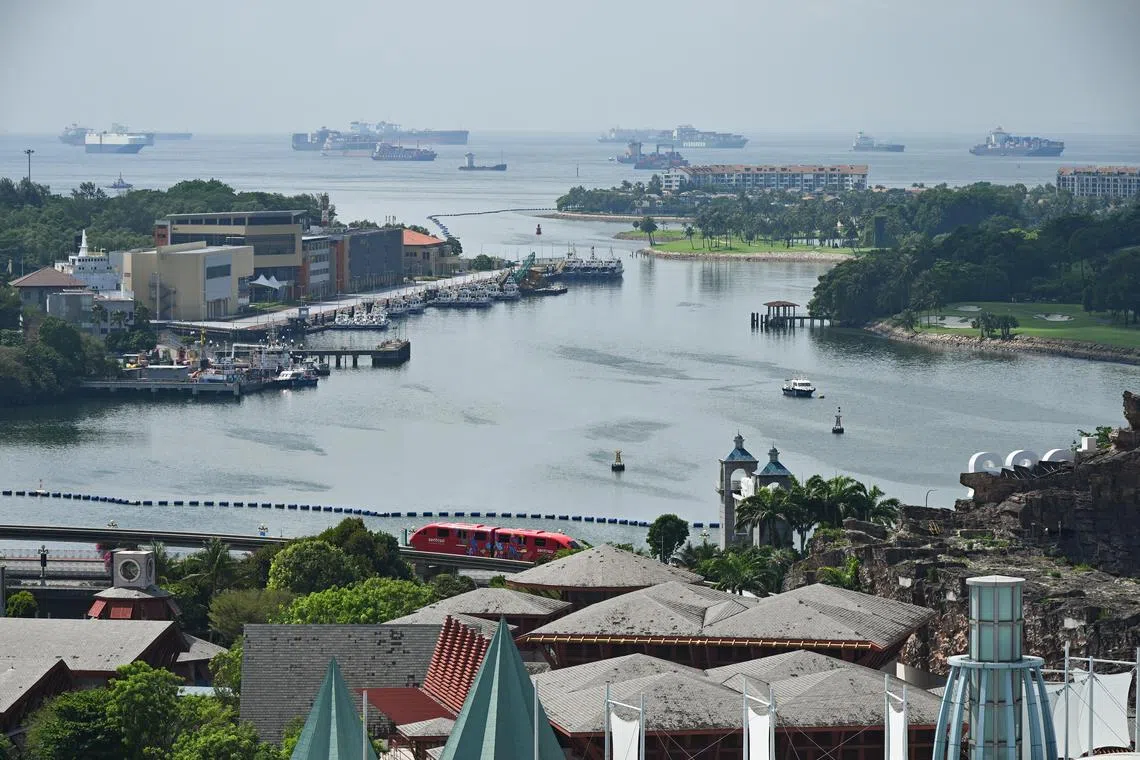Feb 5 diesel oil incident at Singapore coast guard base initially identified as water leak
Sign up now: Get ST's newsletters delivered to your inbox

Singapore’s worst oil spill in a decade happened in June 2024 when a dredging boat hit a stationary cargo tanker at Pasir Panjang Terminal.
ST PHOTO: LIM YAOHUI
Follow topic:
SINGAPORE – Earlier in February, an auxiliary police officer spotted an oil leak at the Police Coast Guard’s (PCG) Brani Regional Base, but took it for a water leak.
The incident at the base resulted in some 23 tonnes of diesel oil leaking into Singapore’s southern waters on Feb 5.
The officer – who was deployed at the base that day – had reported at 11.57am that water was leaking from a damaged hose, Minister of State for Home Affairs Muhammad Faishal Ibrahim said in Parliament on Feb 27.
The minister added that CCTV camera footage and further investigations established the hose as the cause of the leak.
He noted that there were both fuel and water hoses on the pontoon, and that the officer in question was not trained to identify oil leaks.
“Marine diesel appears as a clear, transparent liquid, so he thought it was water,” said Associate Professor Faishal.
He was responding to a parliamentary question by Mr Dennis Tan (Hougang), who had asked whether a formal investigation would be conducted to ascertain the cause of the Feb 5 oil leak at Brani Regional Base.
Neither a PCG officer nor facilities management staff – who conducted further checks at 12.25pm and 1.38pm, respectively – spotted any visible oil sheen on the water or smelled an oil spill, and the case was then assessed to be a water leak.
It was later discovered that the leak had stopped on its own at about 12.20pm, but had restarted at 2.47pm.
The leak was finally stopped at about 3.40pm when a contractor spotted the leak and isolated the main valve, Prof Faishal said.
Investigations by the PCG found that the leak was caused by a damaged fuel hose connecting the wharf’s fuel distribution network to the fuel dispenser on the pontoon, he said.
“PCG’s preliminary assessment is that the fuel hose developed micro-cracks during cyclical stresses, during routine coiling and uncoiling, which eventually led to a tear that caused the fuel spillage,” he said.
He added that such fuel hoses are checked and maintained on a monthly basis.
Following the Feb 5 incident, checks on all fuel hoses at Brani Regional Base were conducted on Feb 6, while similar checks at PCG’s three other bases – at Loyang, Lim Chu Kang and Gul – were conducted on Feb 8.
“While PCG’s maintenance and reporting protocols are generally consistent with industry best practices, PCG is reviewing them nevertheless to further reduce the likelihood of leaks of such magnitude in the future,” said Prof Faishal.
The incident on Feb 5 came after several spills over the past year.
They include Singapore’s worst oil spill in a decade in June 2024 when a dredging boat hit a stationary bunker vessel at Pasir Panjang Terminal.
It resulted in more than 400 tonnes of oil leaking into nearby waters.
And on Oct 20 that year, about 30 to 40 tonnes of oil and water leaked from a land-based pipeline from the Shell oil refinery facility
The British energy giant alerted the authorities to the oil leak more than seven hours after it was discovered.

